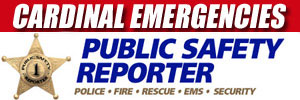An American doctor exposed to Ebola in Sierra Leone is now under observation in an isolation unit at the National Institutes of Health.
An American doctor, whose identity was not released and who was exposed to Ebola in Sierra Leone, is now under observation in an isolation unit at the National Institutes of Health. He does not have the disease but is being watched out of an abundance of caution. The patient arrived at the NIH Clinical Center on Sunday, September 28, at approximately 4 p.m. ET. He was transferred from a jet aircraft at Frederick Municipal Airport and transferred by National Institutes of Health Fire Department Ambulance 751.
The patient is an American physician who was volunteering services in an Ebola treatment unit in Sierra Leone.
Out of an abundance of caution, the patient has been admitted to the NIH Clinical Center’s special clinical studies unit that is specifically designed to provide high-level isolation capabilities and is staffed by infectious diseases and critical care specialists. The unit staff is trained in strict infection control practices optimized to prevent spread of potentially transmissible agents such as Ebola.
No additional details about the patient are available at this time.
NIH is taking every precaution to ensure the safety of our patients, NIH staff, and the public. This situation presents minimal risk to any of them.
National Institutes of Health A-751 is a 2005 International/Wheeled Coach MAV™ (Medical Attack Vehicle) is customized for Cardiac Catheterization Lab Procedures.
According to the NIH Fire Department Local F-271, the NIH Fire Department provides fire, emergency medical, hazardous materials and specialized rescue services to the NIH. Many of the technological hazards at the NIH are unique and require specialized knowledge and originality in devising methods to prevent and mitigate the effects of the demand. Pre-emergency planning must be completed in a timely manner and must coordinate the efforts of the Fire Department with many other NIH support activities. Extensive training must be presented to firefighters and other facility staff along with response personnel from surrounding jurisdictions in emergency planning and response requirements. In addition, the Fire Department serves as the principle liaison with the NIH scientific community and support organizations during emergencies. The Department develops and conducts in-house training initiatives in fire suppression, pre-hospital emergency medical techniques, fire safety initiatives, confined space rescue and other specialized emergency procedures which are necessary to mitigate the effects of incidents involving hazardous chemicals, bio-hazardous and radioactive materials. The Fire Department provides inspection and maintenance on approximately 5,000 fire extinguishers and responds to fires and other emergencies at the National Naval Medical Center and in Montgomery County, Maryland in accordance with current mutual aid agreements.
The National Institutes of Health is unique to the Federal service in that it is the largest biomedical research facility in the United States with approximately 21,000 people working at the Bethesda, Maryland campus. The NIH is characterized by a complex research environment, presenting a wide variety of hazardous operations including 3,500 research laboratories; a research hospital; animal facilities; computer facilities; a high hazard bio-containment (Bio-safety Level 4) laboratory; commercial and industrial occupancies; day care and infant care facilities; dormitory and apartment facilities; single family residential homes and an underground mass transit train station. Each type of operation presents vastly different and unusually difficult problems regarding the types and variety of hazardous conditions which must be efficiently, yet safely, handled.
See also …
www.powerhouse51.com
Stay informed with news from PublicSafetyReporter.com’s Emergencies Behind the Scenes Facebook page — Facebook.com/CardinalEmergencies. Includes links to favorite public safety and emergency rescuers and product manufacturers and safety companies that have facebook pages. Submit your pictures or just stay up-to-date on with fire, rescue, EMS and police photo galleries. Please add your public safety photo to the wall album — go direct to the Arlington Cardinal Emergencies Behind the Scenes photos. For a list of all of The Cardinal Facebook fan pages, go to Arlingtoncardinal.com/about/facebook …

